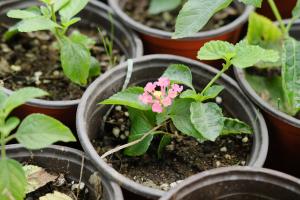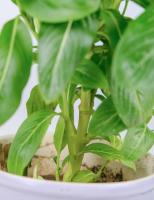How to Plant Fig Trees in Florida
Fig trees are a great addition to any Florida garden. They are relatively low-maintenance and produce delicious fruit. However, planting fig trees can be a bit tricky, especially if you are not familiar with the climate and soil conditions in Florida. In this article, we will guide you through the steps of planting fig trees in Florida, so you can enjoy fresh figs right from your garden.
Choosing the Right Variety of Fig Tree
The first step in planting a fig tree in Florida is to choose the right variety. Florida has a subtropical climate, which means that some varieties of fig trees will not thrive in this environment. The best varieties for Florida are the Brown Turkey, Celeste, and LSU Purple. These varieties are best adapted to the subtropical climate of Florida and will produce good yield.
Location and Soil Requirements
The next step is to choose the right location and soil for your fig tree. Fig trees prefer well-draining soil and full sun exposure. Pick a location that receives at least 6 hours of direct sunlight per day. The soil in the location should be well-draining to avoid standing water around the roots. If your soil is heavy clay, add organic matter like compost, peat moss, or aged manure to help improve drainage.
Planting and Watering
When it comes to planting, dig a hole deep enough to accommodate the root ball, and make sure the hole is wider than the root ball. However, do not plant the fig tree too deep. The top of the root ball should be level with the ground. After planting, water the tree thoroughly to encourage root growth. Keep the soil moist but not soggy, especially during the first few weeks. Once the tree has established, you can reduce watering to once a week in the summer months and once every two weeks in the winter.
Fertilizing and Pruning
Fig trees in Florida need regular fertilization to keep them healthy and productive. Start fertilizing in the spring, just as the leaves begin to emerge. Use a balanced fertilizer, like 10-10-10, and follow the instructions on the package. You can fertilize your fig tree every 4-6 weeks throughout the growing season. Avoid fertilizing in late summer, as it may encourage new growth that will not have enough time to harden before the first frost.
Pruning is not a necessity for fig trees in Florida, but it can help keep the tree healthy and productive. Prune your fig tree in late winter or early spring, before new growth starts. Remove any dead or diseased wood, and thin out crowded branches to improve air circulation. However, do not over prune your fig tree, as it may reduce yield.
Pest and Disease Control
Fig trees in Florida can be vulnerable to pests and diseases, including fig rust, spider mites, and whiteflies. Keep an eye out for any signs of infestation. If you notice any insect or disease problems, deal with them immediately. Use organic methods like neem oil, horticultural oil, or insecticidal soap to control pests. Avoid using chemical pesticides that may harm beneficial insects such as bees and butterflies.
In Conclusion
Planting and growing fig trees in Florida is a relatively easy and enjoyable task. Make sure you choose the right variety, location, and soil, and follow the care instructions carefully. With a little bit of effort, you can harvest fresh and delicious figs right from your own garden.

 how many times do yo...
how many times do yo... how many planted tre...
how many planted tre... how many pine trees ...
how many pine trees ... how many pecan trees...
how many pecan trees... how many plants comp...
how many plants comp... how many plants can ...
how many plants can ... how many plants and ...
how many plants and ... how many pepper plan...
how many pepper plan...





























